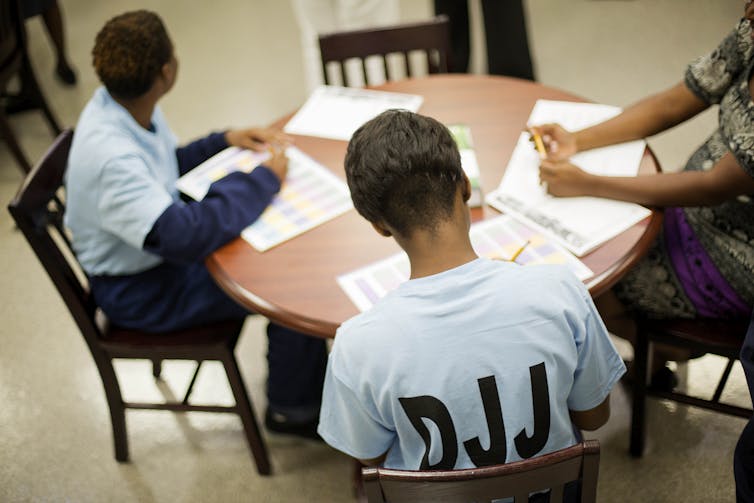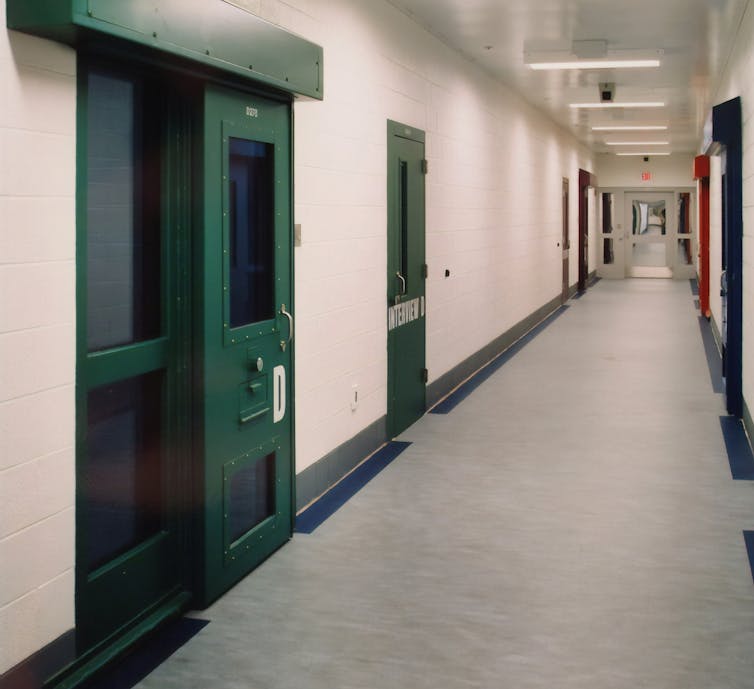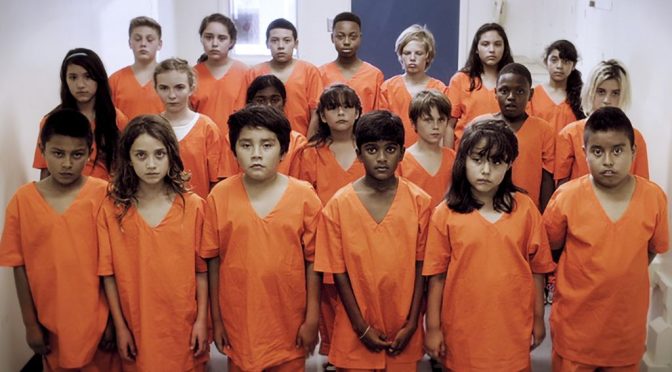Natalia Orendain, University of California, Los Angeles
Children under 12 will no longer be treated as criminals in the state of California when they break the law, based on a new law that went into effect on Jan. 1.

Before the law was passed, California had no minimum age for sending children to juvenile court – and that’s still true of most states. That means that in many places, children as young as six, for example, can be arrested and detained.
In Texas, Mississippi, Kansas, Colorado and other states, the minimum age is 10. Many California state legislators believe that setting a higher standard, 12 years old, will protect younger children from the dangers that come with juvenile detention. And, given that California’s juvenile justice system houses the largest number of youth in the United States and even the world, their stance may influence how other states set their standards for criminal responsibility.
I am a doctoral student studying neuroscience at UCLA. In my lab, we are examining how time spent confined in juvenile facilities affects brain development and behavior. To do so, we study a range of experiences kids encounter when confined, from the good – increased daily structure – to the terrible – assault by other youth and staff. Our study is just beginning, but previous research has shown that the majority of youth experience abuse while confined and show structural brain changes similar to individuals who have experienced lifetime trauma exposure.
What happens in juvenile detention?
Juvenile facilities function as prisons for youth. The key difference between adult prisons and juvenile facilities is that the latter advocate for rehabilitation.
That’s because young people, usually until their mid- to late 20’s, have brains that are still developing and so have the capacity for change – what scientists often refer to as “plasticity.”
Every year, over 1.3 million youth in the U.S. are arrested and 60 percent face confinement for offenses neither violent or sexual in nature, such as probation violation, status offense, drug offense or property crime.
Rehabilitative efforts can include behavior management, writing classes, religious services and even training on how to manage finances.
Despite these efforts, the experience of being detained appears to have overwhelmingly negative consequences for young people.
Research shows that the more youth are involved with the juvenile justice system – from arrest to detainment to transfer to an adult court – the higher their chances are of early death, specifically a violent one. Going to juvenile detention also increases risk for poorer life outcomes in terms of educational attainment, relationships and gainful employment. At this point, these relationships are only correlational, but have been demonstrated across many large studies.

The physical environment inside juvenile detention facilities has an industrial feel, with limited natural light. They are surrounded by chain-linked fences topped with barbed wire.
Once inside, youth are rarely in contact with their support systems, whether that be family, friends or other individuals. While some youth may have been removed from abusive situations at home, the high-threat environment of secure juvenile facilities is far from a rehabilitation-oriented setting.
Maltreatment has been documented in youth detention facilities in most states. According to one survey, about 42 percent of youth in detention are afraid of being physically attacked, 45 percent report unneeded use of force by staff and 30 percent state that staff use isolation as discipline. Isolation, particularly during development, comes with a range of negative physiological and psychological reactions and is associated with the development of mood disorders, like depression and anxiety, and psychosis.
Under such stressful conditions, even young brains would have a difficult time learning or growing. To make matters worse, most youth in the juvenile justice system have experienced early life trauma like abuse and neglect, which can compound the negative effects of these already detrimental experiences.
No ‘magic number’
The clinicians and academics who wrote a policy brief on the California bill cite developmental research, court decisions on youth sentencing and international standards on juvenile justice as the reasons to adopt the age of 12 as the minimum age at which children can be sent to juvenile detention.
However, there is no strong evidence that setting 12 as the lowest age for sending children to detention will provide major benefits. Among these sources cited by the clinicians and academics, the only specific reference to the age of 12 is from international standards set forth by the United Nations Committee on the Rights of the Child.
In 2007, the committee announced 12 as the absolute minimum age of criminal responsibility, but at the same time strongly advocated for higher ages, like 14 or 16. At the time, research investigating brain development in youth was still emerging. Now, more than 10 years later, we know that experiences during all of adolescence tremendously impact brain development and behavior into adulthood.
While a systemic overhaul would be needed to address the current conditions of juvenile confinement, existing diversion programs are an avenue to affect youth of all ages. One such program is the Juvenile Detention Alternatives Initiative, founded by the Annie E. Casey Foundation more than 25 years ago.
The initiative monitors the treatment of youth in secure detention facilities and diverts youth or limits time spent confined. The initiative is implemented in over 300 counties nationwide.
Instead of placing young people in detention facilities, these initiatives promote confining them in their homes, in shelters and reporting centers. This approach has been shown to lower the number of times the youth commit crimes again – a large feat given that 70 to 80 percent of youth involved in the juvenile justice system traditionally face rearrest within three years of their release.
Rather than focusing on a specific age for juvenile detention, I believe a greater impact would come from ensuring that confinement is truly rehabilitative and developmentally appropriate for all youth.![]()
Republished with permission under licence from The Conversation.

